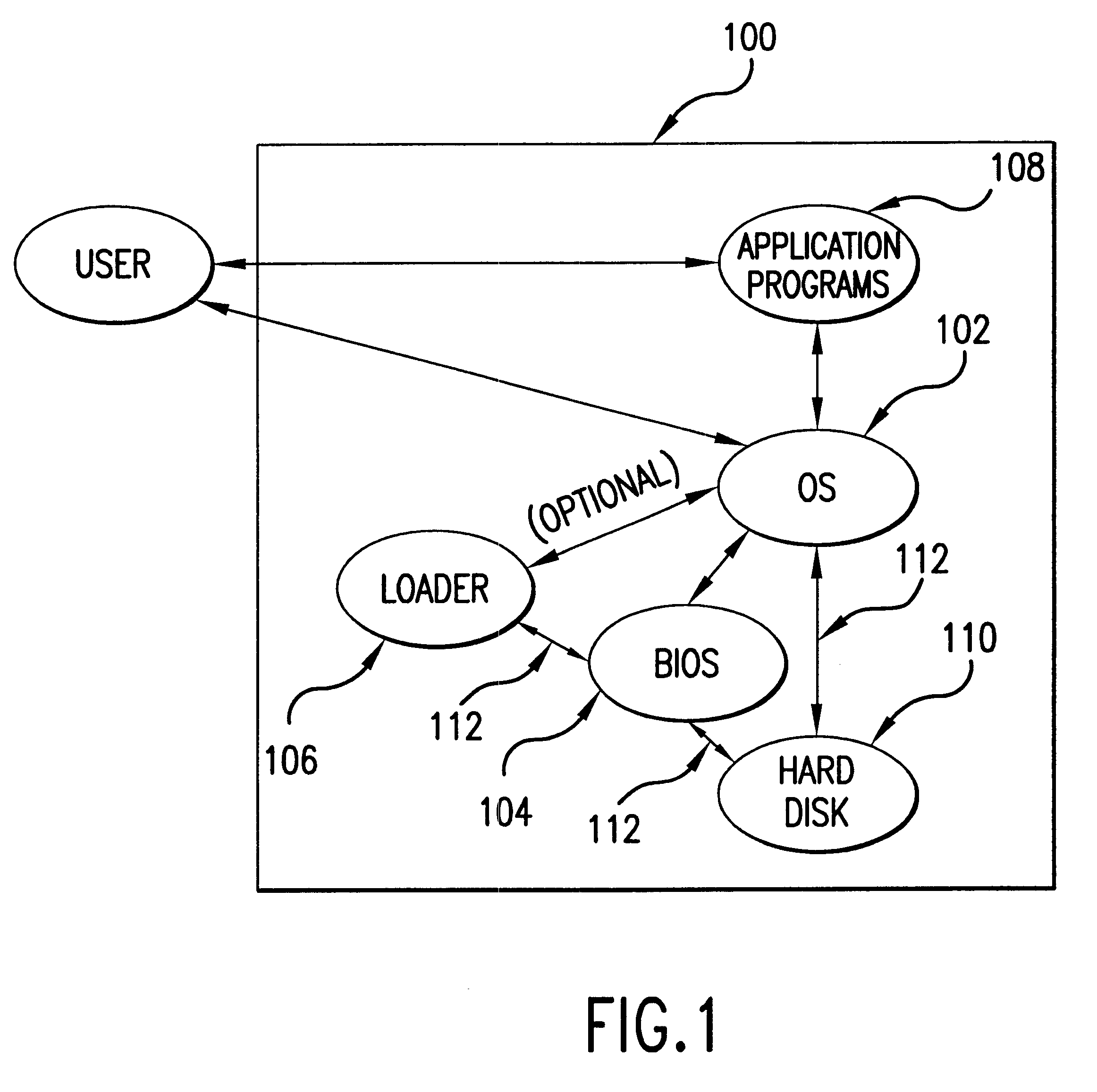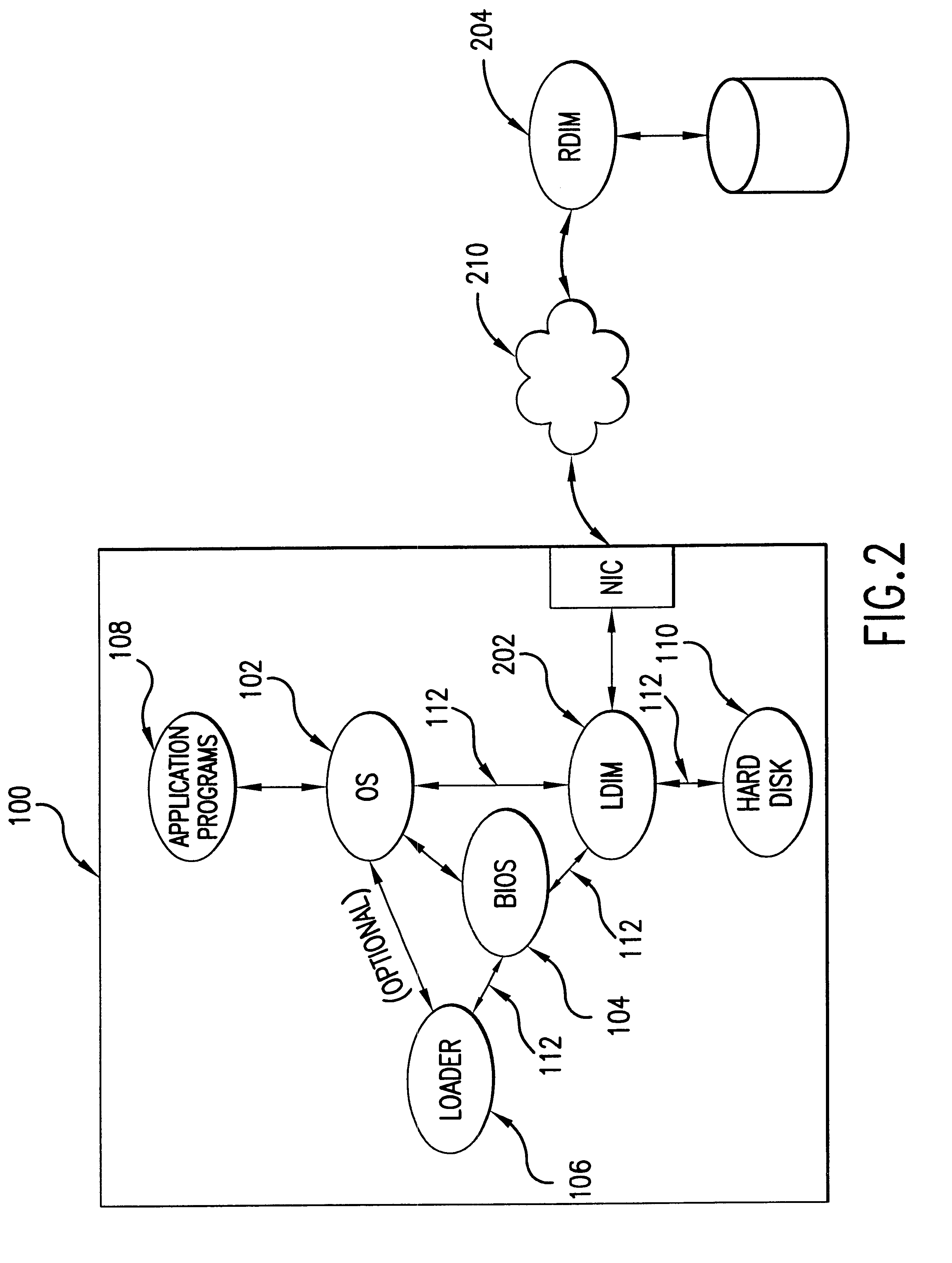Data image management via emulation of non-volatile storage device
a data image and storage device technology, applied in the direction of software deployment, program control, instruments, etc., can solve the problems of user the limits of installed software become the limits of users, and the user has to deal with upgrading or installing a new os or application softwar
- Summary
- Abstract
- Description
- Claims
- Application Information
AI Technical Summary
Benefits of technology
Problems solved by technology
Method used
Image
Examples
Embodiment Construction
While the invention has been particularly shown and described with reference to preferred embodiments thereof, it will be understood by those skilled in the art that the foregoing and other changes in form or detail may be made therein without departing from the scope of the invention.
There are a number of ways to intercept the read / write requests that are intended to be received by a persistent storage device and to implement LDIM 202. For example, on Intel 386 and above processors, the system management mode can be employed to redirect communication to / from disk adapter 304 to a specialized program running on CPU 302. In this case, either the ports for accessing adapter 304 need to generate system management interrupts or adapter 304 needs to be modified to generate system management interrupts after some quantum of the request has been made (e.g., for a write of a single sector, after the 512 bytes of data have been collected by the adapter). In the latter case, adapter 304 must ...
PUM
 Login to View More
Login to View More Abstract
Description
Claims
Application Information
 Login to View More
Login to View More - R&D
- Intellectual Property
- Life Sciences
- Materials
- Tech Scout
- Unparalleled Data Quality
- Higher Quality Content
- 60% Fewer Hallucinations
Browse by: Latest US Patents, China's latest patents, Technical Efficacy Thesaurus, Application Domain, Technology Topic, Popular Technical Reports.
© 2025 PatSnap. All rights reserved.Legal|Privacy policy|Modern Slavery Act Transparency Statement|Sitemap|About US| Contact US: help@patsnap.com



